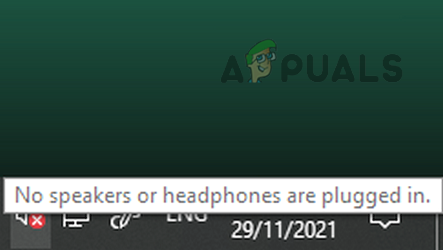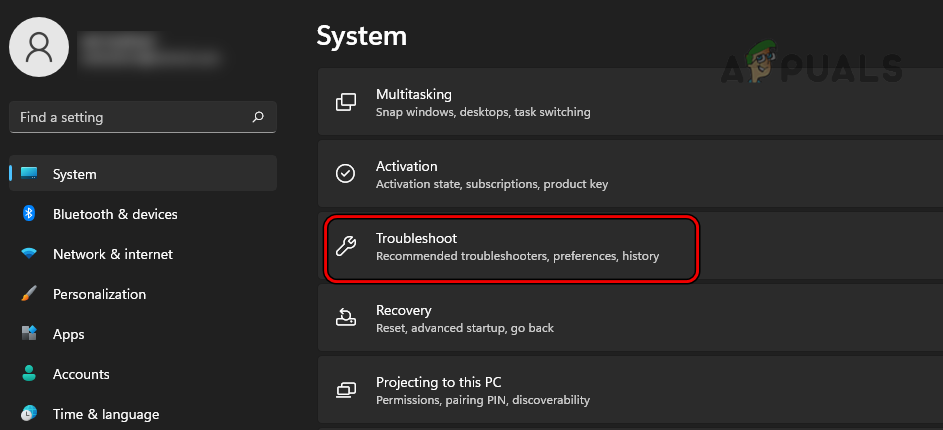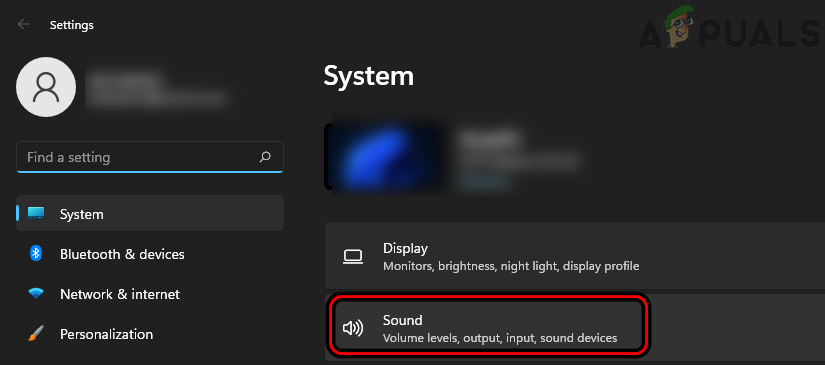There may be many reasons for which your system’s speakers or headphones might not work but the following can be easily considered as the main factors to cause the sound issue:
1. Roll Back the Sound Driver in the Device Manager
If the updated system’s sound driver is not compatible with your PC, then that could result in the issue at hand as the OS may fail to load the incompatible driver. In such a case, rolling back the system’s sound driver may clear the audio issue. Before moving on, check if trying another cable for the speakers (if the issue is occurring on the external speakers) clears the error. Also, check if your system’s audio works fine when booted through another OS USB like a live Ubuntu USB (if possible).
2. Update the PC’s Windows to the Latest Build
The system may show no speakers or headphones issue if the PC’s OS is outdated as it can make the OS incompatible with other essential modules (like the sound driver) and as a result, the OS fails to load the driver. Here, updating the PC’s Windows to the latest build may solve the sound problem.
3. Try the Windows Built-in Troubleshooter
A temporary glitch in the OS’s modules could result in the non-working of speakers or headphones and cause the issue at hand. In such a case, trying the Windows Built-in troubleshooter may solve the problem.
4. Set the Speakers or Headphones as the Default Output Device
If the speakers or headphones are not set as the default output device on your system, then the system might try to route the audio signal to the default output device (that is not present), thus causing the issue. In this scenario, setting the speakers or headphones as the default output device of the system may solve the problem.
5. Disable the Front Jack Detection in the OEM’s Utility (If Applicable)
If an OEM utility like Realtek HD Audio Manager is overriding Windows’ capability to detect a headphone or speaker to the system, then that could result in the no speakers or headphones issue at hand. In this case, disabling the Front Jack Detection in the OEM utility may clear the problem. For elucidation, we will discuss the process of disabling the Front Jack Detection in the Realtek HD Audio Manager. If the issue persists, check if inserting the speakers or headphones into another port or jack resolves the issue. If the system has only one jack, check if re-plugging the audio device (make sure the connector is properly seated, you may wiggle the connector a bit) clears the error.
6. Disable and Enable the System’s Audio Device
A temporary glitch in the system’s modules could stop the audio device from working and cause the issue at hand. Here, disabling and enabling the system’s audio device may solve the problem.
7. Update the System’s Drivers to the Latest Builds
You may also encounter the sound issue under discussion if the system’s drivers are outdated as the sound driver becomes incompatible with the OS and fails to load with the OS. In this context, updating the system’s drivers (especially, the sound driver) to the latest build may solve the problem.
8. Perform the Clean Boot of the System and Uninstall Conflicting Applications
The sound problem under discussion may arise if another application on the system is interfering with the system’s sound driver and not letting it execute. In this scenario, performing a clean boot of the system and uninstalling the conflicting application may solve the problem. The Realtek Audio Manager is a reported utility to cause the problem and if you have installed it (or a similar utility), then check if uninstalling it resolves the issue. For illustration, we will discuss the process of uninstalling the Realtek Audio Manager.
9. Enable the System Services Through the Command Prompt
If the services essential for the operation of the audio device are not enabled, then that could result in the problem at hand. In this case, enabling the system services through the Command Prompt may solve the problem.
10. Update the PC’s BIOS to the Latest Build
You may encounter the speakers or headphones issue if the PC’s BIOS is outdated as it can make the different system devices incompatible with each other. In this context, updating the PC’s BIOS to the latest build may clear the audio issue. Warning: Advance at your own risk and with extreme caution as editing the PC’s BIOS settings or updating the BIOS is a skilled job. If not done properly or something goes wrong (like a sudden power failure during the BIOS update process), you may brick your system and the data may be lost.
11. Reinstall the Sound Driver
The no speaker or headphones issue might emerge if the system’s sound driver is corrupt and has become incompatible with the OS. In this case, reinstalling the system’s sound driver may solve the problem.
12. Edit the System’s Registry to Allow the User Full Control Over the Audio Service
If none of the above worked for you, then editing the system’s registry to allow the user full control over the audio service (especially, on a domain-joined computer) may solve the problem. Before proceeding, do not forget to backup your system’s registry (just in case…). Warning: Proceed at your own risk and with utmost care as editing your system’s registry is a skillful job. If not done properly, you may cause undying damage to the system, OS, and, data.
13. Remove the Conflicting Windows Update
If the PC’s latest Windows Update is conflicting with your system’s sound hardware, then that could also result in the audio issue under discussion. Here, removing the conflicting Windows update may solve the problem.
14. Perform an In-Place Upgrade of the System
The speakers or headphones issue might also occur if the system’s Windows is corrupt and due to this corruption, the OS fails to load the sound driver. Here, performing an In-place upgrade of the system may solve the problem. Before proceeding, do not forget to back up the system and create a restore point. Also, ensure the system drive has enough free space to complete the installation (for 64-bit: 32 GB and 32-bit: 20GB). If the system gets interrupted during the upgrade process, then you may remove any 3rd party security application (at your own risk) and disable the BIOS’s Secure Boot. If the issue persists, then check if performing a system restore resolves the audio issue. If that did not work or is not an option, then you may reset your PC to the factory defaults or perform a clean installation of Windows on your system to clear the sound problem. If that did not work, then the sound card might be faulty and you may need a new sound card.
Fix Windows Update Error 0XC19001E2 in Windows 10 (Fix)FIX: Windows Defender Error The service couldn’t be started Error code:…How to Fix ‘System 53 Error has Occured’ Error on Windows?[FIX] ‘An Error Occured while Trying To Copy a File’ Filmora Installation Error…








































